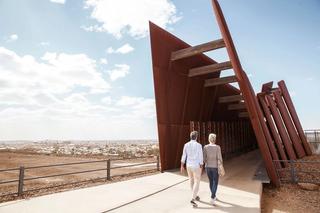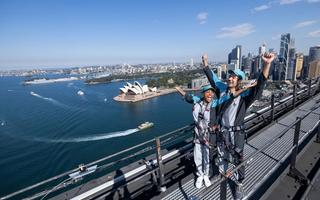According to a recent study into global pollution levels, Broken Hill has the cleanest air of any continental urban area in Oceania.
Researchers at independent air quality website HouseFresh compiled a report on the world’s best and worst towns and cities for clean air. They analysed 2024 data on the average PM2.5 level in every large town and city in the world.
PM2.5 refers to fine airborne particles with a diameter of 2.5 micrometers or less, with the level indicating the concentration of these particles in the air. High PM2.5 levels are a public health concern because these tiny particles can penetrate deep into the lungs and even the bloodstream, which can lead to serious health issues.
All 10 of Oceania's cleanest large towns and cities on the list were located in Australia.

Broken Hill also recorded the second cleanest air in the world, behind Chu in Kazakhstan.
The outback NSW town is rich with history and has a vibrant artistic community. Visitors can discover amazing galleries, famous sculptures, cool cafes, palatial federation heritage and towering mining landmarks in Australia’s first heritage-listed city.

Other NSW towns in the top 10 for Oceania were Griffith (no.6) and Lismore (no.8).
HouseFresh noted that towns and cities are hotspots for air pollution from transport emissions and tire wear, domestic and industrial fossil fuel combustion and other sources.
Not only do urban areas generate more pollution, but their very shape makes it worse: the urban heat island effect catalyzes the release of additional chemical fumes, while rows of tall buildings restrict the outward flow of polluted air.
Urban air pollution isn’t just an issue for local inhabitants. Bad air travels. For instance, London emits over 6000 tonnes of PM2.5 (fine particulate matter) and 51,000 tonnes of NO2 annually, which has a detrimental effect on much of the southeast of England. In Delhi, over half of the particulate matter in the air is from nearby states and countries; the same is true of many rural areas in India.
Over four billion people live in cities, and experts predict that this figure will double by 2050. Yet, many areas — particularly in the developing world — lack robust air monitoring systems. Meanwhile, even in areas where air quality data is available, governments are slow or resistant to improving conditions for their citizens.
According to the researchers, Australia’s relatively low population density, stricter emissions regulations and growing investment in cleaner transport and energy all help keep pollution levels down.
Sustainability key to NSW visitor economy growth
Sustainability and resilience are integral to the future of
NSW’s visitor economy, driving global demand for responsible
travel and preserving NSW’s natural and cultural heritage.
Actions outlined in the NSW Visitor Economy Strategy 2035 include:
- Promote green aviation: Drive Sustainable Aviation Fuel (SAF) adoption by incentivising local production, expanding SAF infrastructure and partnerships with airlines to reduce aviation emissions.
- Accelerate carbon neutrality: Support visitor economy businesses with renewable energy adoption, carbonneutral certification and waste reduction practices.
- Foster regenerative tourism: Develop conservation projects and eco-tourism experiences in partnership with visitor economy stakeholders and Aboriginal communities.
Learn more about the NSW Visitor Economy Strategy 2025 here.
.jpg?rect=0,94,1800,1013&w=320&h=180&fit=min&auto=format)


